
How to test a subwoofer with a multimeter
Content
An active subwoofer is one of the essential elements of a complete audio system, whether your setup is for movies, music, games, or all of the above.
People usually seek to upgrade their music systems with subwoofers to boost the low frequencies that conventional speakers cannot reproduce.
A problem with the subwoofer may adversely affect the sound quality. In such a situation, the best option is to check the subwoofer with a multimeter.
This guide will help you learn how to test a subwoofer with a multimeter in just a few easy steps.
Let's get right in!
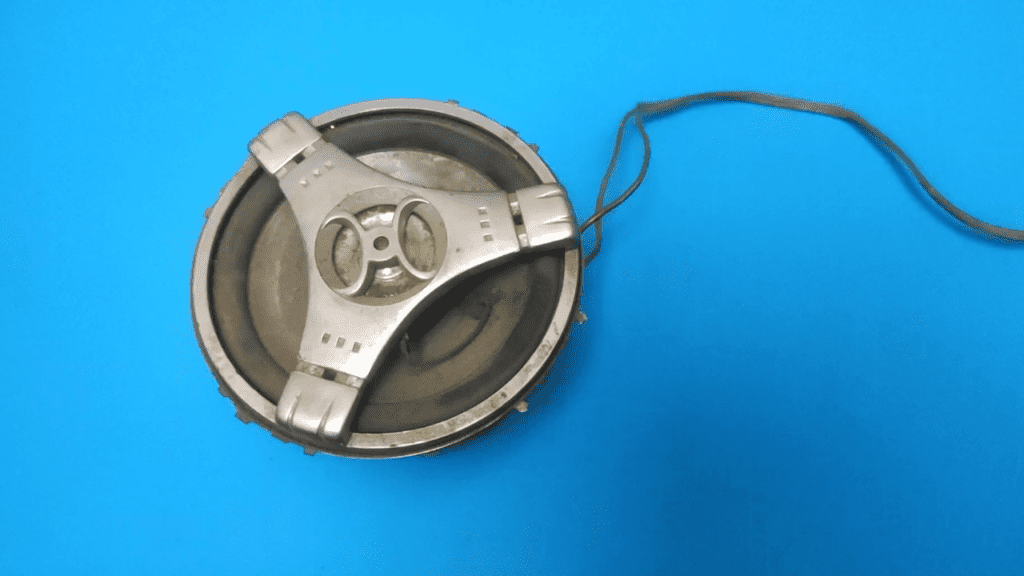
How does a subwoofer work
The subwoofer is an essential part of any sound system as it is a loudspeaker designed specifically to reproduce low frequency sound. While most subwoofers are powered, some are passive and require an amplifier to operate.
Subwoofers send sound waves to the subwoofers in the music system, resulting in low frequencies being heard. Subwoofers are usually best suited for car audio systems or home theater systems. Not all subwoofers have built-in amplifiers. You may need to use an external amplifier for the functionality of some of them.
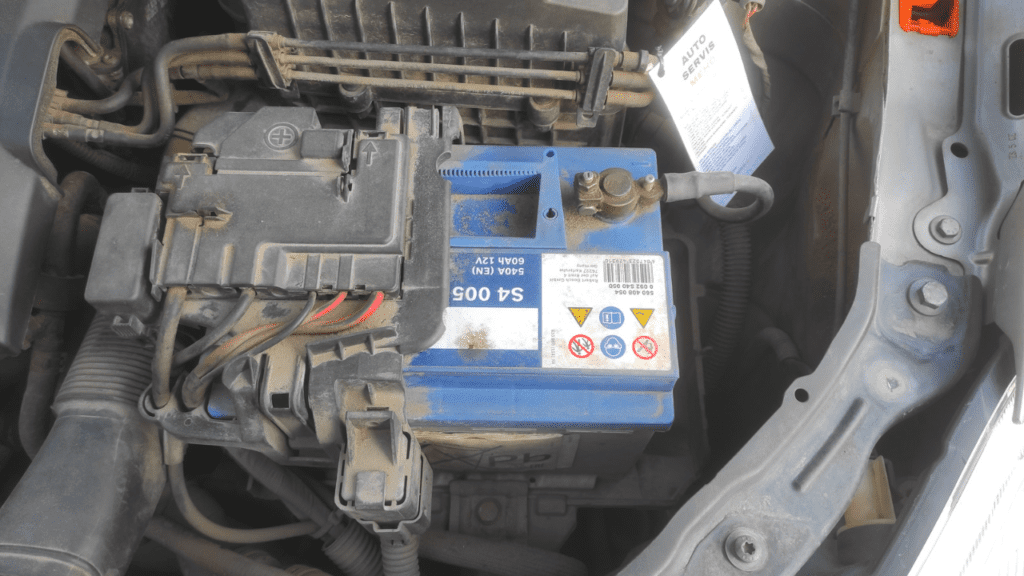
How to tell if a subwoofer is defective
There are many signs that indicate whether your subwoofer is defective or not. These range from lack of bass and distortion to audible scratchy sounds.
The cone of a bad subwoofer may not move at all. It can also be very wobbly, which may indicate that it is damaged or not in the best condition.
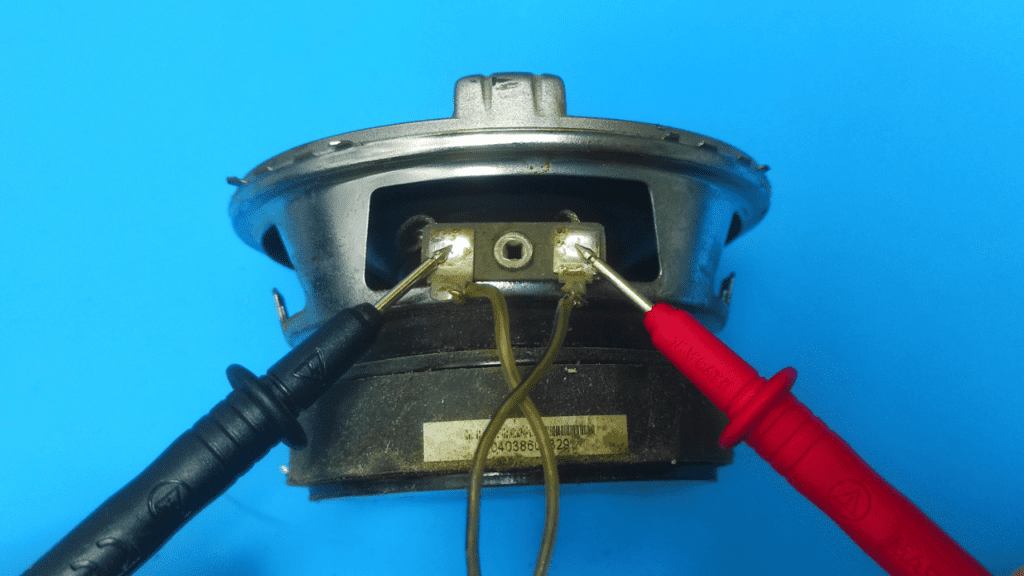
The best way to make sure your subwoofer is working properly is to test it with a multimeter. The multimeter can measure impedance, check for a burnt coil, and measure continuity.
How to test a subwoofer with a multimeter
Connect the multimeter leads to the positive and negative voice coil terminals of the subwoofer, setting it to the resistance value in ohms, especially in the 200 ohm range. Well, if you get readings from 1 to 4, if there is no resistance, the subwoofer is probably burned out.
We will go through each step and every other important step in detail.
- Disconnect the subwoofer from the power supply
First, you must take the necessary materials and disconnect the subwoofer from the power source. This procedure can be as simple as removing a subwoofer from an external amplifier or removing a subwoofer from a car battery, depending on whether the subwoofer is active or passive.
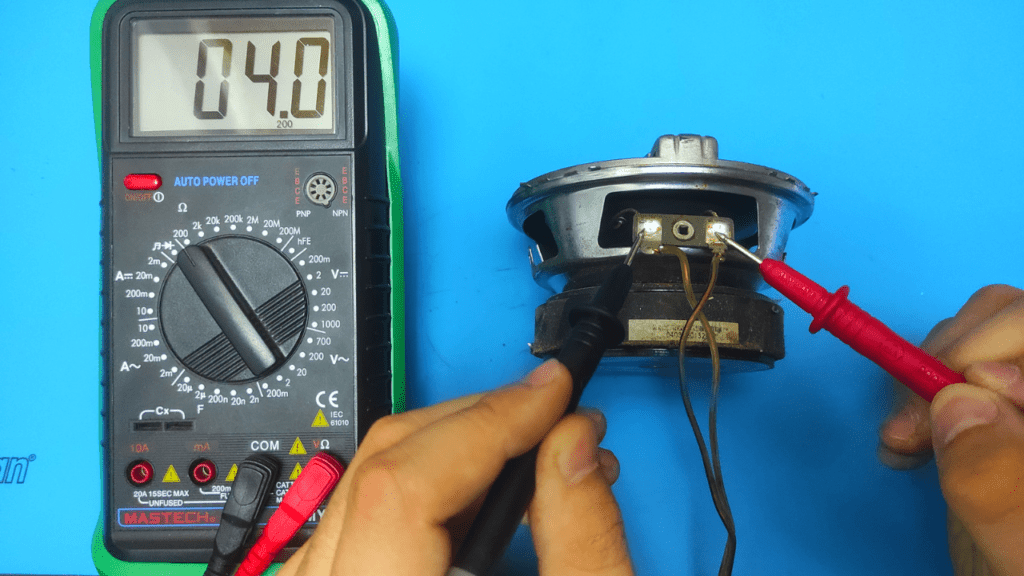
- Remove the subwoofer from the case
You can safely remove the subwoofer from the vehicle after it has been disconnected from the power source. However, depending on the design of the subwoofer, you may need to remove the cone from the cabinet to get to the wire spool.

- Insert the multimeter leads into the voice coil terminal.
After removing it from the housing, the multimeter probes must be inserted into the input terminal of the subwoofer diffuser wire coil. These are red and black, corresponding to the red and black probes on the multimeter.
Connect the multimeter leads to the subwoofer terminal of the corresponding color. Make sure they are fully inserted before turning on the multimeter.
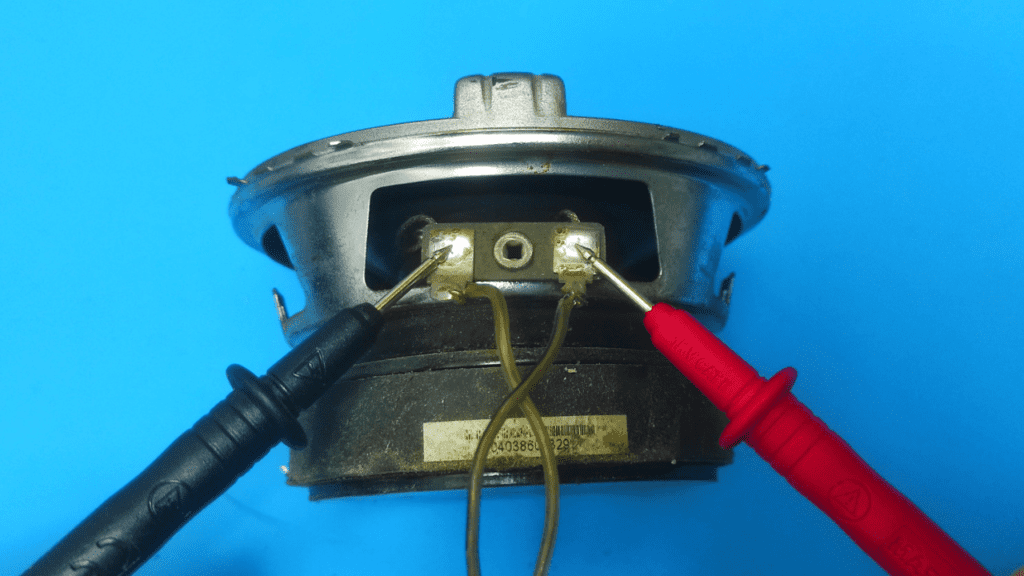
- Set the resistance of the multimeter in ohms
You should measure the subwoofer's impedance to check for problems. You must turn the dial of the multimeter to the ohm position to measure the resistance. Turn on the power and change the front dial setting of the multimeter to ohms. The digital display should immediately show a reading.
On a multimeter, the ohm setting is indicated by the symbol Omega (Ohm), which, as you will see, also has several ranges (2 MΩ, 200 Ω, 2 kΩ, 20 kΩ, and 200 kΩ).
You should turn the multimeter to the 200 ohm limit because that is the nearest higher range that gives the most accurate results. Place the positive and negative leads next to each other to check if the multimeter is set correctly.
If everything is set up correctly, the multimeter will beep in continuous mode or display a value very close to zero or zero when the ohm setting is used. Proceed to the next step if you received them.

- Rate results
Depending on your subwoofer, the multimeter should read between 1 and 4. If it doesn't show any resistance, the subwoofer is probably burned out, and if the multimeter shows a lower reading, it should be discarded. Also, the voice coil can burn out if the work drifts too often.
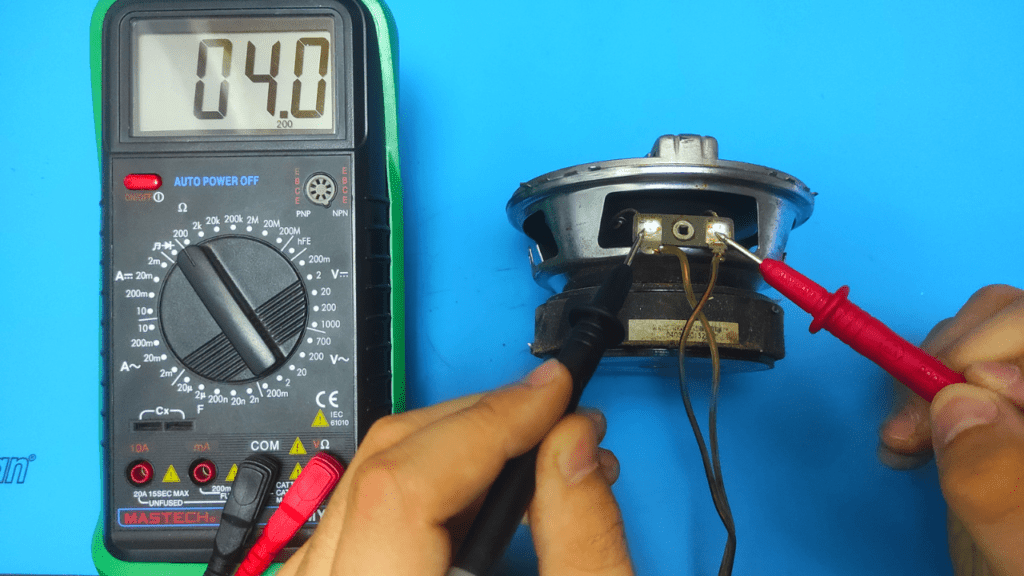
Guide Video
You can also watch our video guide:
Test the subwoofer without an amplifier
The voice your subwoofer is playing is an easy way to test it. Having an amplifier for this is quite helpful in figuring out what is wrong with your subwoofer. With an amplifier, you can hear the defects and distortion of a burned-out subwoofer. However, you can test your subwoofer without an amplifier if you want to be more precise and thorough, or you don't have one.
There is a method you can use if you want to test a subwoofer without using an amplifier. To do this, you will need a 9V battery, a tester or multimeter, and a wire. You will need a wire, a tester or multimeter and a 9V battery.
Connect the subwoofer and battery by taking a wire and connecting the positive end of the coil to the positive end of the 9 volt battery. It would be better if you did the same on opposite ends.
After the battery has been connected correctly, determine if the woofer cone rises. As soon as you connect the battery, your subwoofer should start to rise if it's working properly. And it should decrease after you turn off the power. You have to assume the subwoofer is already blown if it doesn't move.
If so, check if the subwoofer is burned out with a tester or multimeter. You can do this using the previous subwoofer impedance method. Your subwoofer is burned out if the reading is 1 ohm or higher.
This is a great way to determine if your subwoofer needs to be repaired because it has failed or there are other problems.
Can a burned out subwoofer be repaired?
In some cases, you can repair a blown subwoofer yourself. If your voice coil is stuck, find a flashlight or similar round object and use it to push the coil back into place. Then see if it works.
You can seal the gap with speaker dust cover glue and paper towel. Use glue to seal the hole in the towel after applying it. The paper towel must be smooth for a seamless patch.
If your foam surround is broken, you can fix it by removing the spacer from the frame and cutting off the damaged part from the subwoofer. After removing the residue with alcohol, attach a new foam edging. Place the new foam edging on and let the glue dry a bit. Install the gasket last.
Conclusion
Checking subwoofers with a multimeter for problems such as lack of bass or distortion is one of the easiest diagnostic procedures to perform if you do it right.
Make sure you set your multimeter to the correct range to get correct results.
F.A.Q.
How do you know if your subwoofer is burned out?
You can determine if the subwoofer is burned out, if there is no sound at all, if the music is distorted or creaks, if there is movement in the cone, if there are pops and crackles in the voice.
What causes a subwoofer to stop working?
The most common cause of subwoofer failure is too much power. The amplifier empowers the subwoofer when it puts out too much power and creates unbearable pressure.

